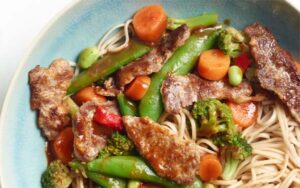Understand Your Risk for Heart Disease
The first step toward heart health is understanding your risk of heart disease. Your risk depends on many factors, some of which are changeable and others that are not. Risk factors are conditions or habits that make a person more likely to develop a disease. These risk factors may be different for each person. Preventing heart disease starts with knowing what your risks factors are and what you can do to lower them.
Risk factors for heart disease
- Have high blood pressure
- Have high blood cholesterol
- Have overweight or obesity
- Have prediabetes or diabetes
- Smoke
- Do not get regular physical activity
- Have a family history of early heart disease, for example if your father or brother was diagnosed before age 55, or your mother or sister was diagnosed before age 65
- Have a history of preeclampsia, which is a sudden rise in blood pressure and too much protein in the urine during pregnancy
- Have unhealthy eating behaviors
- Are age 55 or older for women or age 45 or older for men
Each risk factor increases your chance of developing heart disease. The more risks you have, the higher your overall risk.
Some risk factors cannot be changed. These include your age, sex, and a family history of early heart disease. Many others can be modified. For example, being more physically active and eating healthy are important steps for your heart health. You can make the changes gradually, one at a time. But making them is very important.
Women and heart disease
Women generally get heart disease about 10 years later than men do, but it’s still women’s #1 killer. After menopause, women are more likely to get heart disease, in part because estrogen hormone levels drop. Women who have gone through early menopause, either naturally or because they have had a hysterectomy, are twice as likely to develop heart disease as women of the same age who have not gone through menopause. Middle age is also a time when women tend to develop other risk factors for heart disease, such as high blood pressure.
Preeclampsia, which is high blood pressure during pregnancy, raises your risk of developing coronary heart disease later in life. It is a risk factor that you can’t control. However, if you’ve had the condition, you should take extra care to monitor your blood pressure and try to lower other heart disease risk factors.
You and your healthcare provider: A heart-healthy partnership
Risk factors such as high blood pressure or cholesterol generally don’t have obvious signs or symptoms. A crucial step in determining your risk is to see your provider for a thorough checkup and risk assessment. Your provider may use a risk calculator to estimate your risk of having a heart attack, having a stroke, or dying from a heart or blood vessel disease in the next 10 years or throughout your life.
For example, the Atherosclerotic Cardiovascular Disease (ASCVD) Estimatorexternal considers your cholesterol levels, age, sex, race, and blood pressure. It also factors in whether you smoke or take medicines to manage your high blood pressure or cholesterol.
Your provider can be an important partner in helping you set and reach goals for heart health. Ask about your risk for heart disease at your annual checkup. Since your risk can change over time, keep asking each year.
Questions to ask your provider at your annual checkup
- What is my risk of developing heart disease?
- What is my blood pressure? What does it mean for me, and what do I need to do about it?
- What are my cholesterol numbers? What do they mean for me, and what do I need to do about them?
- What is my body mass index (BMI) and waist measurement? Do I need to lose weight for my health?
- What is my blood sugar level, and does it mean I’m at risk for diabetes?
- What other screening tests for heart disease do I need? How often should I return for checkups for my heart health?
- How can we work together to help me quit smoking?
- How much physical activity do I need to help protect my heart?
- What is a heart-healthy eating plan for me? Should I see a registered dietitian or qualified nutritionist to learn more about healthy eating?
- How can I tell when I’m having a heart attack?
If you already are being treated for heart disease or heart disease risk factors, discuss your treatment plan with your provider. Ask questions if you do not understand something or need more information. You may want to write down questions before your appointment as well.
Source: https://www.nhlbi.nih.gov/health/heart-healthy-living/risks
Watch this video from SpiriTrust Lutheran to learn more about heart health.
NOTE: The information in this blog is for informational purposes only. You should not rely on this information as a substitute for, nor does it replace, professional medical advice, diagnosis or treatment. If you have any concerns or questions about your health, you should always consult with a physician or other health care professional. The use of any information provided on this site is solely at your own risk.
Stir-Fried Orange Beef Recipe

Delicious heart healthy recipes are as good for your heart as they are for your taste buds! This tangy orange flavored beef with crisp vegetables is great over brown rice or Asian-style soba or udon noodles.
- Prep time: 10 minutes
- Cook time: 20 minutes
- Serving Size: 2 cups meat and vegetables
INGREDIENTS
- 1 bag (12 oz) frozen stir-fry vegetables
- 1 tbsp peanut or vegetable oil
- 1 tbsp onion, minced (or ½ tbsp dried)
- 1 tbsp garlic, minced (about 2–3 cloves)
- 1 tbsp ginger, minced
- 1 egg white, lightly beaten (or substitute liquid egg white)
- 2 tbsp cornstarch
- 12 oz beef flank steak, sliced into thin strips
- 3 tbsp Hoisin sauce
- 1 tbsp lite soy sauce
- ½ cup orange juice
- 1 tbsp dry sherry (optional)
DIRECTIONS
- Thaw frozen vegetables in the microwave (or place entire bag in a bowl of cold water for about 30 minutes). Set aside until step 7.
- Put egg white in one bowl and cornstarch in another. Dip steak strips into egg white and then coat with cornstarch.
- Heat oil in a large wok or sauté pan.
- Add onion, garlic, and ginger and stir fry until tender but not brown, about 30 seconds to 1 minute.
- Add steak strips to pan and continue to stir fry until steak strips are lightly browned, about 5–8 minutes.
- Add Hoisin sauce, soy sauce, orange juice, and sherry (optional), and bring to a boil over high heat. Immediately lower temperature to a gentle simmer.
- Add the thawed vegetables and mix gently. Simmer until vegetables are heated through, about 3–4 minutes.
- Divide mixture into four equal portions (about 2 cups each) and serve.
MAKES 4 SERVINGS
Each serving provides 261 calories, 9 g total fat, 2 g saturated fat, 28 mg cholesterol, 418 mg sodium, 23 g protein, 23 g carbohydrates, 648 mg potassium, 3 g total fiber.
SOURCE: www.nhlbi.nih.gov/resources/stir-fried-orange-beef-recipe


